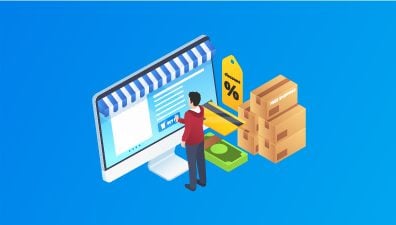Omnichannel distribution refers to a comprehensive approach to sales and fulfillment that integrates all available channels, including physical stores, online platforms, mobile apps, and social media. This strategy ensures that customers receive a consistent and unified experience regardless of how or where they choose to interact with a brand. The omnichannel distribution meaning extends beyond merely having multiple channels; it involves synchronizing these channels to provide real-time inventory updates, personalized marketing, and seamless transitions between online and offline environments.
To put it simply, omnichannel distribution is about breaking down the silos between different sales and distribution channels to create a cohesive and efficient system that caters to the modern consumer’s needs. This approach leverages technology and data analytics to understand customer behaviors, preferences, and purchasing patterns, allowing businesses to tailor their strategies accordingly.
Table of Contents
Understanding Omnichannel Distribution
In an era where customer expectations are higher than ever, understanding the intricacies of omnichannel distribution is crucial for businesses aiming to thrive. This section delves into the core components, benefits, and strategic importance of omnichannel distribution, illustrating how it enhances customer satisfaction, boosts sales, and optimizes inventory management.
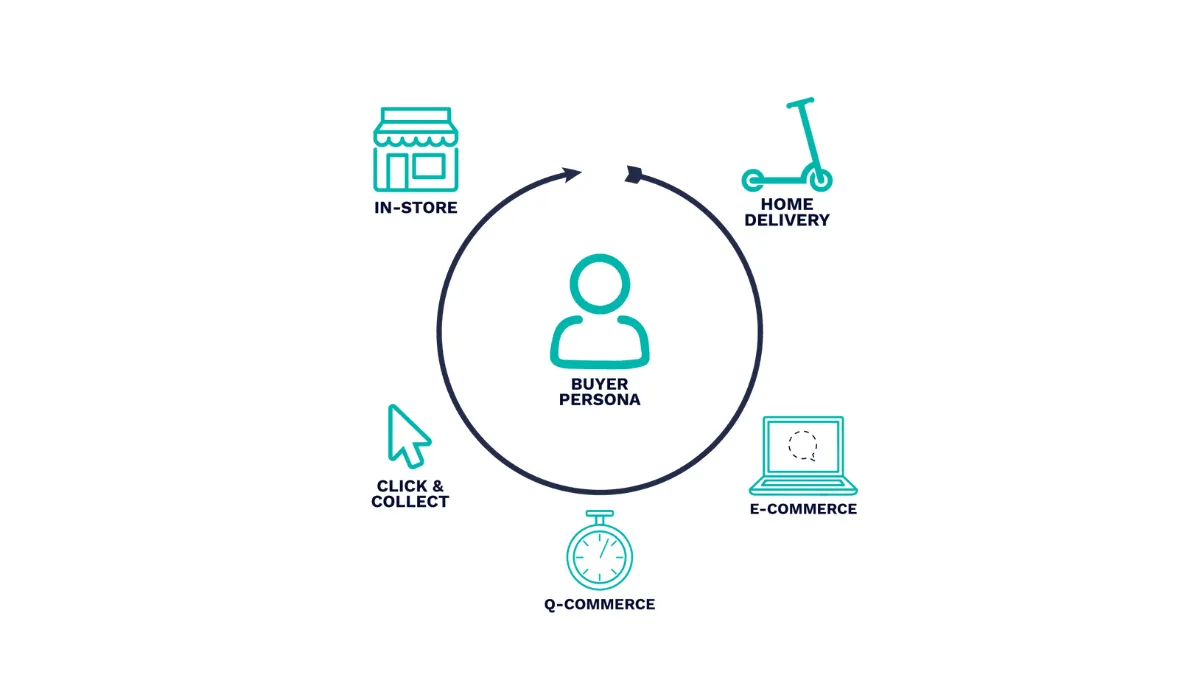
By examining these elements, we can appreciate the transformative power of a well-executed omnichannel distribution strategy.
Key Components
This section delves into the core elements of omnichannel distribution, focusing on the integration of physical and digital channels, creating a unified customer experience, and ensuring seamless data flow and inventory management.
Key Components and Processes Involved in Omnichannel Distribution
The foundation of omnichannel distribution lies in its key components, which include:
- Channel Integration: This involves the synchronization of various sales and distribution channels to provide a unified experience. These channels include physical stores, online stores, mobile apps, social media platforms, and marketplaces. Effective channel integration ensures that customers can switch between these channels without any disruption.
- Inventory Management: Efficient inventory management is crucial for omnichannel distribution. It involves tracking and managing inventory levels across all channels to ensure product availability. This component relies heavily on advanced inventory management systems that provide real-time updates and visibility into stock levels.
- Order Fulfillment: This process encompasses the entire journey of an order, from placement to delivery. A robust order fulfillment system ensures that orders are processed, packed, and shipped accurately and promptly. It also includes managing returns and exchanges efficiently.
- CRM: CRM systems play a vital role in omnichannel distribution by consolidating customer data from various channels. This integration helps businesses understand customer preferences and behavior, enabling personalized marketing and improved customer service.
- Data Analytics: The use of data analytics is essential for making informed decisions in omnichannel distribution. Analyzing customer data, sales trends, and inventory levels helps businesses optimize their strategies and improve overall efficiency.
Integration of Physical and Digital Channels
The integration of physical and digital channels is a cornerstone of omnichannel distribution. This integration ensures that customers can enjoy a seamless experience regardless of the channel they choose to interact with. Here are some ways this integration is achieved:
- Unified Inventory Systems: By integrating inventory systems, businesses can provide accurate stock information across all channels. For example, a customer shopping online can see the availability of a product in their nearest physical store, which is a common omnichannel distribution example.
- Consistent Pricing and Promotions: Ensuring that pricing and promotional offers are consistent across all channels is vital. This consistency helps in building trust and avoiding customer confusion.
- Cross-Channel Services: Services like buy online, pick up in-store (BOPIS), and reserve online, try in-store (ROTIS) exemplify the integration of physical and digital channels. These services enhance convenience and improve the shopping experience.
Unified Customer Experience
Creating a unified customer experience is at the heart of omnichannel distribution. This involves:
- Personalization: Leveraging data from various channels to provide personalized recommendations, offers, and communication. For example, a customer who browses a product online can receive personalized follow-up offers or suggestions via email or mobile notifications.
- Seamless Transitions: Ensuring that customers can transition seamlessly between channels. For instance, a customer may start shopping on a mobile app, continue on a desktop website, and complete the purchase in a physical store without any disruption in their experience.
- Consistent Customer Service: Providing consistent and high-quality customer service across all channels. This includes having customer support available through phone, email, chat, and social media, with access to the same customer information and history.
Seamless Data Flow and Inventory Management
Seamless data flow and efficient inventory management are critical to the success of an omnichannel distribution strategy. This involves:
- Real-Time Data Integration: Implementing systems that allow real-time data sharing between different channels and departments. This integration ensures that inventory levels, sales data, and customer information are always up-to-date.
- Advanced Inventory Management Systems: Utilizing sophisticated inventory management systems that provide real-time visibility into stock levels across all channels. These systems help in optimizing stock levels, reducing the risk of stockouts, and minimizing excess inventory.
- Automation and Technology: Employing automation tools and technologies like RFID tags, IoT devices, and AI-powered analytics to streamline inventory management and data flow. Automation helps in reducing manual errors and improving overall efficiency.
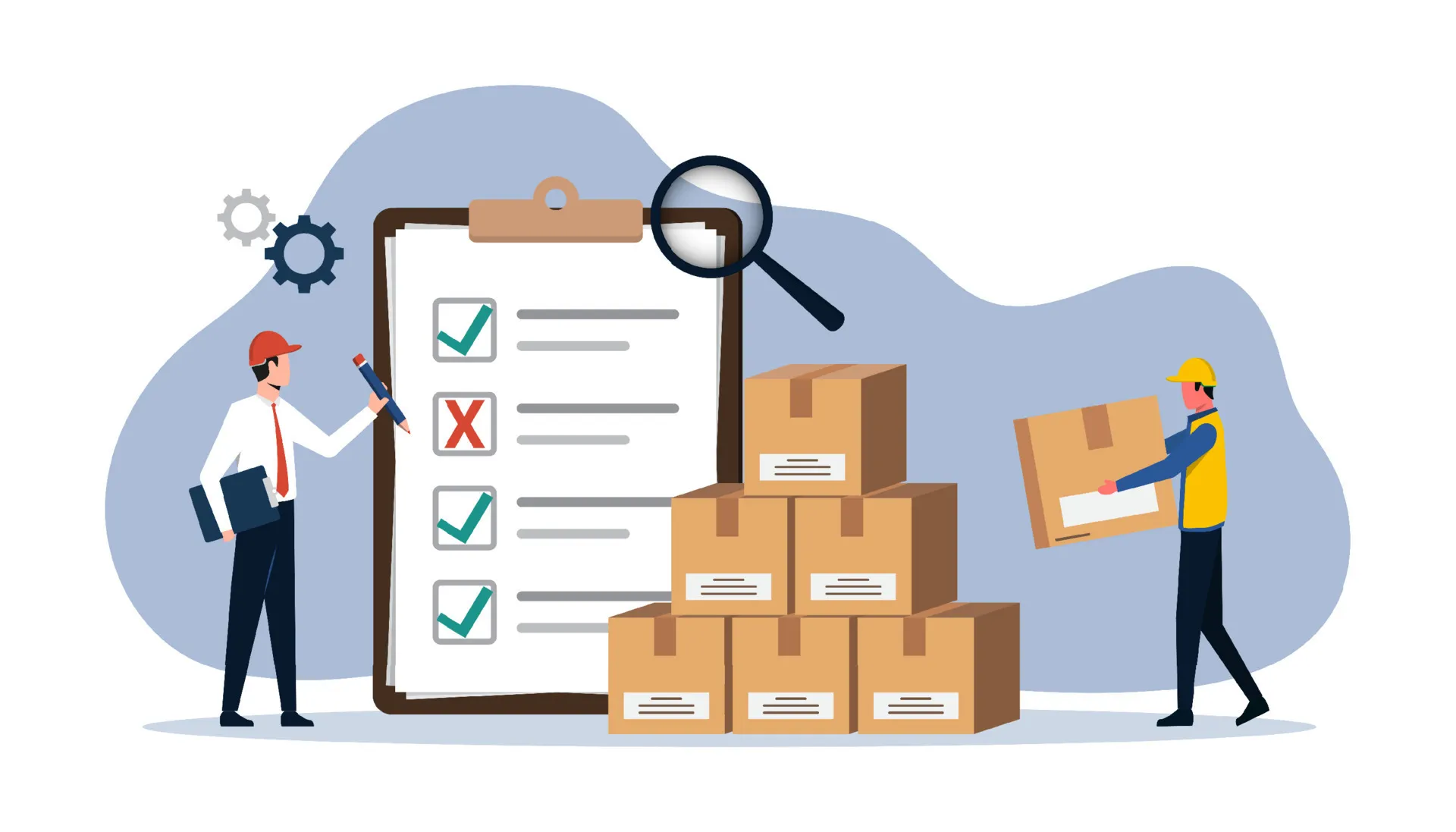
By understanding and implementing these key components, businesses can develop a robust omnichannel distribution strategy that meets the evolving needs of modern consumers. The integration of physical and digital channels, the creation of a unified customer experience, and the management of seamless data flow and inventory are essential elements that drive the success of omnichannel distribution.
Benefits of Omnichannel Distribution
Enhanced Customer Satisfaction and Loyalty
- Consistent Customer Experience: By integrating physical and digital channels, businesses ensure that customers have a consistent experience regardless of how they choose to shop. For instance, an omnichannel distribution example is when a customer can start a purchase online and finish it in-store, or vice versa, without any disruption.
- Personalization: Leveraging data from various touchpoints allows businesses to offer personalized recommendations and promotions. This level of personalization makes customers feel valued and understood, enhancing their overall satisfaction and loyalty.
- Convenience: Omnichannel distribution offers various convenient shopping options such as buy online, pick up in-store (BOPIS), and curbside pickup. These options cater to the diverse preferences of customers, making it easier for them to shop in a way that suits their lifestyle.
- Improved Customer Service: With a unified view of the customer, support teams can provide better assistance, whether the customer reaches out via phone, email, chat, or in-store. This consistent and informed customer service experience strengthens customer relationships and loyalty.
- Real-Time Inventory Information: Providing customers with real-time inventory information across all channels prevents disappointment from stockouts and enhances the shopping experience. Customers can check product availability online before visiting a store, which saves time and improves satisfaction.
Increased Sales and Revenue
- Broader Reach: Omnichannel distribution expands a business’s reach by leveraging multiple sales channels. Customers who prefer shopping online can do so, while those who prefer in-store experiences are also catered to. This inclusive approach attracts a wider audience and increases sales potential.
- Higher Conversion Rates: A seamless shopping experience across channels leads to higher conversion rates. For example, a customer who adds items to their cart online can easily complete the purchase in-store, reducing the likelihood of abandoned carts. This omnichannel distribution example demonstrates how channel integration can drive sales.
- Cross-Selling and Upselling: By having a unified view of customer preferences and purchase history, businesses can effectively implement cross-selling and upselling strategies. Personalized recommendations based on previous purchases encourage customers to buy additional products, increasing average order value and overall revenue.
- Promotional Synergy: Keep updating omnichannel marketing trends and coordinated marketing efforts across all channels to create a synergistic effect, amplifying the impact of promotions and campaigns. Consistent messaging and targeted offers reach customers more effectively, driving both online and offline sales.
- Increased Customer Lifetime Value (CLV): Satisfied and loyal customers are more likely to make repeat purchases and recommend the brand to others. By fostering loyalty through a superior omnichannel experience, businesses can increase the lifetime value of each customer, contributing to long-term revenue growth.
Better Inventory Management and Reduced Costs
- Accurate Demand Forecasting: With comprehensive data from all sales channels, businesses can better forecast demand and adjust inventory levels accordingly. This reduces the risk of overstocking or stockouts, leading to more efficient inventory management.
- Centralized Inventory Visibility: A unified inventory management system provides real-time visibility into stock levels across all channels. This allows for better decision-making regarding stock allocation and replenishment. For example, a business can redistribute inventory from a slow-moving store to one with higher demand, optimizing stock utilization.
- Reduced Storage Costs: By optimizing inventory levels and reducing excess stock, businesses can lower storage costs. Efficient inventory management minimizes the need for additional warehouse space and reduces carrying costs, contributing to overall cost savings.
- Improved Order Fulfillment: Seamless integration of inventory systems enhances order fulfillment processes. Businesses can fulfill orders from the most efficient location, whether it’s a warehouse, a store, or a distribution center. This flexibility reduces shipping costs and delivery times, improving the customer experience.
- Enhanced Return Management: Efficient handling of returns is essential for customer satisfaction and cost control. An integrated inventory system allows for streamlined return processes, where returned items can be quickly restocked and made available for resale. This reduces the impact of returns on inventory levels and minimizes potential losses.
Differences between Omnichannel Distribution & Omnichannel Retails?
While both concepts aim to provide seamless experiences across multiple channels, they differ significantly in their primary focus and operational approaches. This section explores these differences, highlighting how each strategy uniquely contributes to a cohesive and efficient omnichannel ecosystem.
Scope and Focus
Omnichannel distribution and omnichannel retail are often used interchangeably, but they encompass distinct aspects of a business’s operations. Understanding the scope and focus of each can help businesses develop more effective strategies tailored to their specific needs.
Omnichannel Distribution: The Flow of Goods and Logistics
Omnichannel distribution is primarily concerned with the efficient movement and management of goods across various channels. The goal is to ensure that products are available where and when customers want them, regardless of the purchasing platform. This focus includes:
- Logistics and Supply Chain Management: Omnichannel distribution involves the coordination of logistics and supply chain processes to ensure smooth and timely delivery of products. This includes warehousing, transportation, and inventory management. An omnichannel distribution example is when a retailer uses a central warehouse to manage stock for both online and physical stores, ensuring that inventory levels are optimized and goods are distributed efficiently.
- Integrated Inventory Systems: One of the key components of omnichannel distribution is the integration of inventory systems across all sales channels. This integration allows businesses to maintain real-time visibility of stock levels, reducing the risk of stockouts and overstock situations. Effective inventory management is crucial in an omnichannel distribution strategy, as it directly impacts the ability to fulfill orders promptly and accurately.
- Order Fulfillment: Omnichannel distribution focuses on optimizing order fulfillment processes to meet customer expectations for fast and reliable delivery. This includes strategies such as ship-from-store, where online orders are fulfilled from the nearest physical store, and cross-docking, where goods are quickly transferred from inbound to outbound transportation without long-term storage. These methods help reduce delivery times and improve efficiency.
- Technology and Automation: The use of advanced technologies such as Warehouse Management Systems (WMS), Transportation Management Systems (TMS), and automated fulfillment centers is integral to omnichannel distribution. These technologies enable businesses to streamline operations, enhance accuracy, and improve overall logistics performance. For instance, automation in warehouses can speed up the picking and packing processes, ensuring that orders are processed quickly.
Omnichannel Retail: Customer Interaction and Sales Channels
In contrast, omnichannel retail is centered around creating a cohesive and engaging customer experience across all sales channels. The emphasis is on interaction, engagement, and providing a seamless shopping journey. Key aspects include:
- Customer Experience: Omnichannel retail aims to provide a consistent and personalized shopping experience, whether customers are browsing online, visiting a physical store, or using a mobile app. This involves integrating customer data from various touchpoints to offer tailored recommendations, personalized promotions, and a unified shopping cart. An omnichannel retail strategy ensures that customers feel recognized and valued, enhancing their overall satisfaction and loyalty.
- Sales Channels Integration: Omnichannel retail involves the seamless integration of all sales channels to create a unified shopping environment. This includes synchronizing online and offline stores, mobile apps, social media platforms, and marketplaces. For example, a customer might discover a product on social media, check its availability on the retailer’s website, and then purchase it in a physical store. This fluid transition between channels is a hallmark of effective omnichannel retail.
- Marketing and Communication: Effective communication and marketing are crucial in omnichannel retail. Businesses use coordinated campaigns across all channels to reinforce their brand message and engage with customers. This includes email marketing, social media interactions, targeted ads, and in-store promotions. By maintaining consistent messaging and leveraging data analytics, retailers can better understand customer behavior and preferences, driving more effective marketing efforts.
- Customer Support and Service: Providing exceptional customer support across all channels is a key focus of omnichannel retail. This involves offering various support options such as live chat, phone support, email, and in-store assistance. A unified CRM system helps ensure that customer service representatives have access to the same customer information, allowing for consistent and informed support regardless of the contact channel.
- In-Store Experience Enhancements: Omnichannel retail also emphasizes enhancing the in-store experience through digital integrations. This can include interactive kiosks, mobile point-of-sale (POS) systems, and augmented reality (AR) tools. These technologies enhance the shopping experience by providing additional information, facilitating quick checkouts, and offering immersive product demonstrations.
Summary of differences
While both omnichannel distribution and omnichannel retail aim to provide a seamless customer experience, their scopes and focuses are distinct:
- Omnichannel Distribution: Concentrates on the logistics and flow of goods, ensuring efficient inventory management, order fulfillment, and the use of advanced technologies to streamline operations.
- Omnichannel Retail: Centers on customer interaction, marketing platforms and sales channels, emphasizing personalized experiences, integrated marketing, consistent customer support, and enhanced in-store engagements.
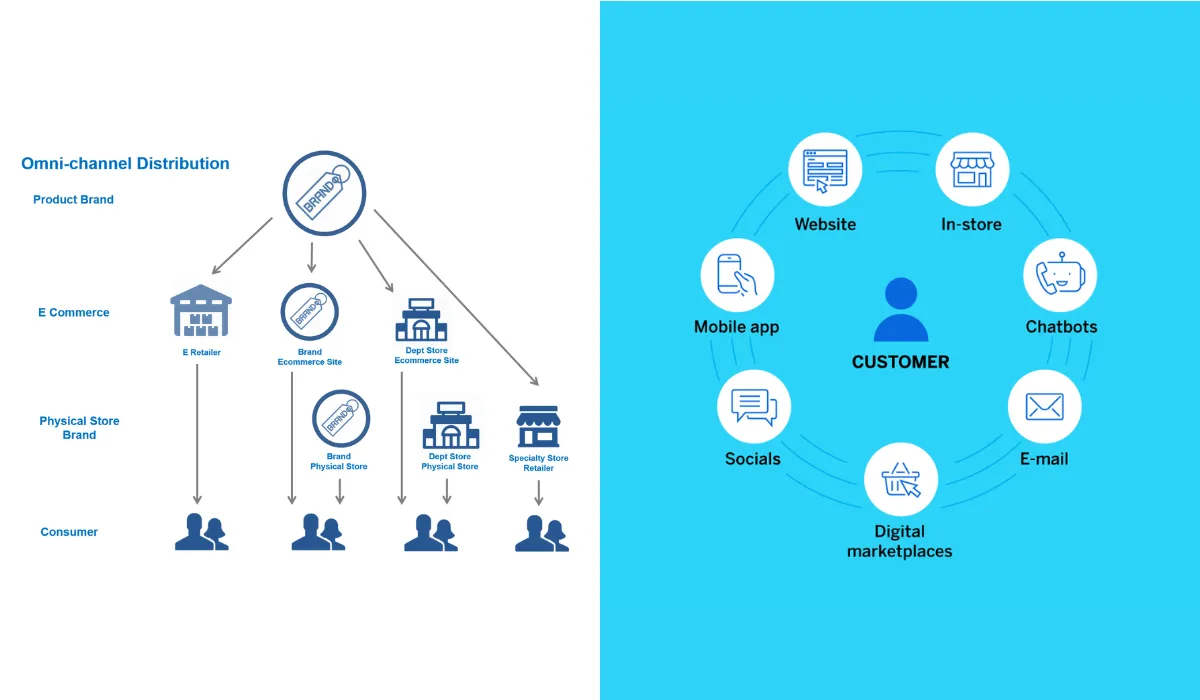
Understanding the distinctions between omnichannel distribution and omnichannel retail is crucial for businesses aiming to optimize their operations and customer engagement. While both strategies aim to create a seamless customer experience across multiple channels, their primary focus and operational dynamics differ significantly.
Aspect | Omnichannel Distribution | Omnichannel Retail |
Primary Focus | Logistics and flow of goods | Customer interaction and sales channels |
Objective | Ensure timely and accurate order fulfillment | Provide a consistent, personalized shopping experience |
Customer Interaction | Limited direct interaction; primarily automated notifications | High level of direct interaction through multiple sales channels |
Customer Service | Focuses on order status, delivery issues, and returns | Comprehensive support across various platforms |
Operational Strategies | Centralized vs decentralized distribution, drop-shipping vs cross- docking | Integrated sales channels, consistent marketing communication, enhanced in- store experiences |
Inventory Management | Advanced inventory management and real-time tracking systems | Focuses on maintaining optimal stock levels across channels |
Marketing and Communication | Less emphasis on direct marketing: relies on order updates | Coordinated marketing efforts, personalized recommendations |
By recognizing these differences, businesses can tailor their omnichannel strategies to effectively address both logistical challenges and customer engagement needs, ensuring a balanced approach that enhances overall performance and customer experience.
Strategies for Implementing Omnichannel Distribution
Implementing a successful omnichannel distribution strategy requires careful planning and an understanding of various operational approaches. This section explores the critical strategies businesses can adopt. By examining these methods, companies can tailor their omnichannel distribution processes to meet the demands of today’s market.
Operational
Implementing an effective omnichannel distribution strategy requires careful consideration of various operational approaches. This section explores two critical operational strategies: centralized distribution vs decentralized distribution, and drop-shipping vs cross-docking. Understanding these strategies and their implications can help businesses optimize their omnichannel distribution processes to enhance efficiency, reduce costs, and improve customer satisfaction.
Centralized Distribution vs Decentralized Distribution
Centralized Distribution
Centralized distribution involves consolidating inventory and distribution operations in a single or a few strategically located facilities. This approach offers several advantages and challenges that need to be considered in an omnichannel distribution strategy.
- Advantages:
- Economies of Scale: Centralized distribution allows businesses to benefit from economies of scale. By consolidating inventory in one location, companies can reduce costs associated with storage, labor, and management. This approach can lead to significant savings, especially for businesses with large inventories.
- Improved Inventory Management: Managing inventory from a central location simplifies stock monitoring and control. It enables more accurate demand forecasting and inventory replenishment, reducing the risks of stockouts and overstock situations.
- Consistent Service Levels: Centralized distribution ensures uniformity in service levels. Customers can expect consistent delivery times and service quality, regardless of their location. For instance, an omnichannel distribution example would be a large retailer using a central warehouse to fulfill online orders, ensuring that customers nationwide receive the same level of service.
- Challenges:
- Longer Delivery Times: One of the main drawbacks of centralized distribution is the potential for longer delivery times, especially for customers located far from the distribution center. This can impact customer satisfaction and lead to increased shipping costs.
- Risk Concentration: Relying on a single or a few distribution centers can be risky. Any disruption, such as natural disasters, strikes, or technical issues, can significantly impact the entire supply chain.
Decentralized Distribution
Decentralized distribution involves spreading inventory and distribution operations across multiple locations. This approach can provide greater flexibility and responsiveness but also comes with its own set of advantages and challenges.
- Advantages:
- Faster Delivery: By positioning distribution centers closer to customers, businesses can reduce delivery times and improve customer satisfaction. This is particularly beneficial for meeting the demand for same-day or next-day deliveries.
- Flexibility and Scalability: Decentralized distribution allows businesses to scale operations more easily by adding new distribution centers as needed. It also provides greater flexibility in responding to regional demand fluctuations.
- Risk Mitigation: Spreading distribution centers across different locations reduces the risk of disruptions affecting the entire supply chain. For example, if one center faces an issue, others can compensate, ensuring continuity of operations.
- Challenges:
- Higher Operational Costs: Managing multiple distribution centers can be more expensive due to increased labor, facility, and transportation costs. Effective coordination and communication are essential to maintain efficiency.
- Complex Inventory Management: Decentralized distribution requires sophisticated inventory management systems to track and balance stock levels across multiple locations. This complexity can lead to challenges in maintaining optimal inventory levels.
Drop-Shipping vs Cross-Docking
Drop-Shipping
Drop-shipping is a fulfillment method where retailers do not hold inventory themselves. Instead, when a customer places an order, the retailer forwards the order to a supplier, who then ships the product directly to the customer. This method has gained popularity in the context of omnichannel distribution for several reasons.
- Advantages:
- Low Initial Investment: Drop-shipping eliminates the need for retailers to invest in inventory and warehousing, reducing upfront costs. This makes it an attractive option for new businesses or those looking to expand their product range without significant capital investment.
- Wide Product Selection: Retailers can offer a broader range of products without worrying about storage space. This flexibility allows businesses to quickly adapt to changing market trends and customer preferences.
- Scalability: Drop-shipping enables retailers to scale operations easily. As sales increase, businesses can handle more orders without the constraints of physical inventory.
- Challenges:
- Reliance on Suppliers: Retailers are dependent on suppliers for product availability, quality, and timely delivery. Any issues on the supplier’s end can negatively impact the customer experience.
- Lower Profit Margins: Since retailers do not purchase products in bulk, they may face higher per-unit costs, leading to lower profit margins compared to traditional retail models.
- Limited Control: Retailers have less control over the fulfillment process, including packaging and shipping. This can impact brand consistency and customer satisfaction.
Cross-Docking
Cross-docking is a logistics practice where products are directly transferred from inbound to outbound transportation with minimal or no storage time. This method is used to streamline the supply chain and reduce handling costs, making it an efficient option for omnichannel distribution.
- Advantages:
- Reduced Storage Costs: By minimizing the time products spend in storage, cross-docking significantly reduces warehousing costs. This efficiency can lead to substantial savings, especially for high-volume operations.
- Faster Delivery: Cross-docking accelerates the movement of goods through the supply chain, leading to shorter delivery times. This speed is crucial for meeting the growing demand for quick deliveries in the omnichannel distribution context.
- Improved Inventory Turnover: With products moving quickly through the distribution process, businesses can achieve higher inventory turnover rates. This efficiency reduces the risk of obsolescence and improves cash flow.
- Challenges:
- High Coordination Requirements: Successful cross-docking requires precise coordination between inbound and outbound shipments. Any delays or mismatches can disrupt the entire process, leading to inefficiencies.
- Limited Applicability: Cross-docking is not suitable for all types of products. It works best for fast-moving, perishable, or high-demand items that do not require long-term storage.
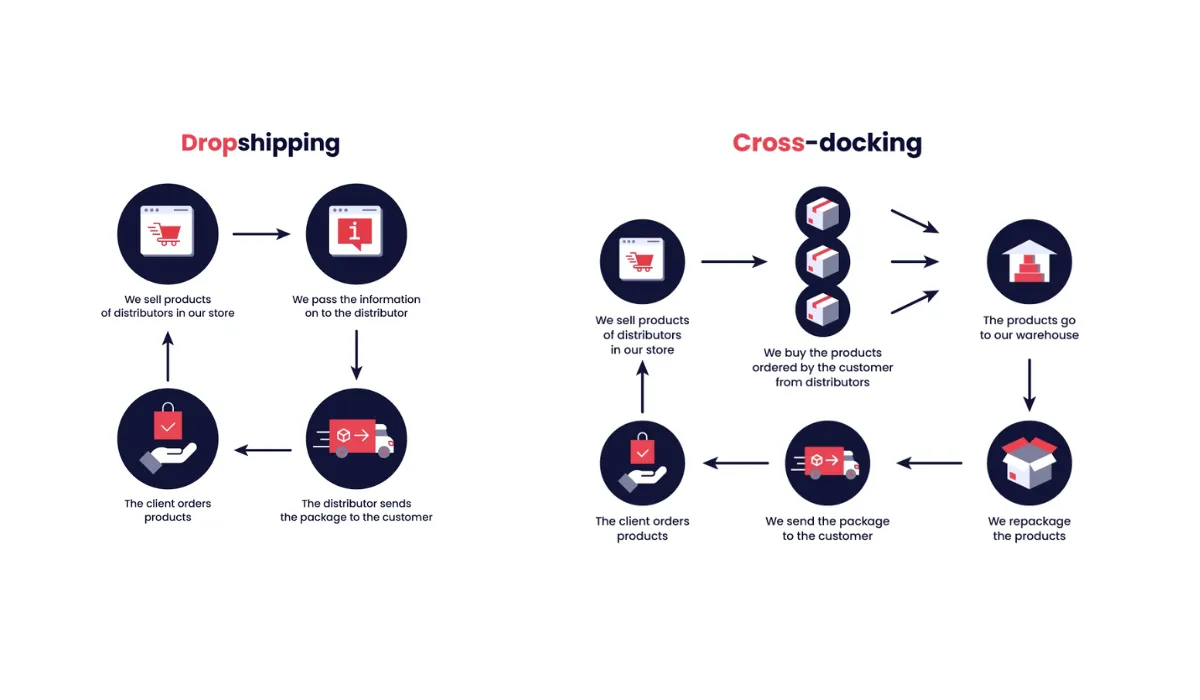
Choosing the right operational strategies is crucial for implementing an effective omnichannel distribution strategy. Centralized and decentralized distribution approaches offer distinct advantages and challenges, and businesses must carefully evaluate which model best suits their needs. Similarly, the choice between drop-shipping and cross-docking depends on the specific requirements of the business, including inventory management capabilities, product types, and customer expectations. By understanding and leveraging these strategies, businesses can optimize their omnichannel distribution processes, enhancing efficiency, reducing costs, and ultimately providing a superior customer experience.
Customer-Centric Approach
Even though not directly engaged in customer interaction, a successful omnichannel distribution strategy still must place the customer at the center of all operations. By understanding the customer journey and touchpoints, and leveraging personalization and customization, businesses can create a seamless and engaging experience that meets the evolving demands of modern consumers. This section explores how to implement a customer-centric approach in omnichannel distribution.
Understanding Customer Journey and Touchpoints
To effectively implement an omnichannel distribution strategy, it is essential to have a comprehensive understanding of the customer journey and the various touchpoints along the way. This involves mapping out all the stages of the customer’s interaction with the brand, from initial awareness to post-purchase engagement.
Customer Journey Mapping:
- Awareness: The journey begins when a potential customer becomes aware of a brand through marketing channels such as social media, online ads, or word-of-mouth. At this stage, it’s crucial to provide consistent messaging across all platforms.
- Consideration: During this phase, customers research and compare products. Providing detailed product information, customer reviews, and comparison tools on both the website and in-store can influence their decision-making process.
- Purchase: The actual purchase can occur through various channels, including online stores, mobile apps, or physical stores. An omnichannel distribution example is allowing customers to place an order online and pick it up in-store, ensuring a seamless transaction.
- Delivery: Efficient and transparent delivery processes are critical. Real-time tracking and timely updates keep customers informed and satisfied.
- Post-Purchase: After the purchase, follow-up emails, personalized recommendations, and efficient return processes contribute to customer retention and loyalty.
Touchpoints:
- Online: Websites, mobile apps, email newsletters, and social media are primary online touchpoints. These platforms must be integrated and provide a consistent experience.
- In-Store: Physical stores offer a tactile experience where customers can see and feel products. Integration with online systems allows for services like buy online, pick up in-store (BOPIS).
- Customer Service: Support through phone, chat, email, and in-store assistance must be cohesive and informed by the same customer data.
Data Integration: Collecting and analyzing data from all touchpoints provides insights into customer behavior and preferences. This information is vital for personalizing the shopping experience and improving service.
Personalization and Customization in Omnichannel Distribution
Personalization and customization are key components of all customer-centric omnichannel strategies, and this applies to omnichannel distribution as well. By leveraging customer data, businesses can tailor their offerings and communications to individual preferences, enhancing the overall shopping experience.
Personalized Recommendations:
- Data-Driven Insights: Using data analytics, businesses can analyze past purchases, browsing behavior, and demographic information to make personalized product recommendations. For example, a customer who frequently buys sports equipment might receive suggestions for new fitness gear.
- Cross-Channel Consistency: Recommendations should be consistent across all channels. If a customer browses products on the mobile app, the same recommendations should appear on the website and in marketing emails.
Tailored Shopping Experience:
- Omnichannel Integration: Ensuring that customer preferences and purchase history are accessible across all channels allows for a seamless experience. An omnichannel distribution example is enabling store associates to access online customer profiles, providing personalized service in-store.
- Flexible Fulfillment Options: Offering various fulfillment options, such as home delivery, in-store pickup, or locker pickup, caters to different customer needs and preferences.
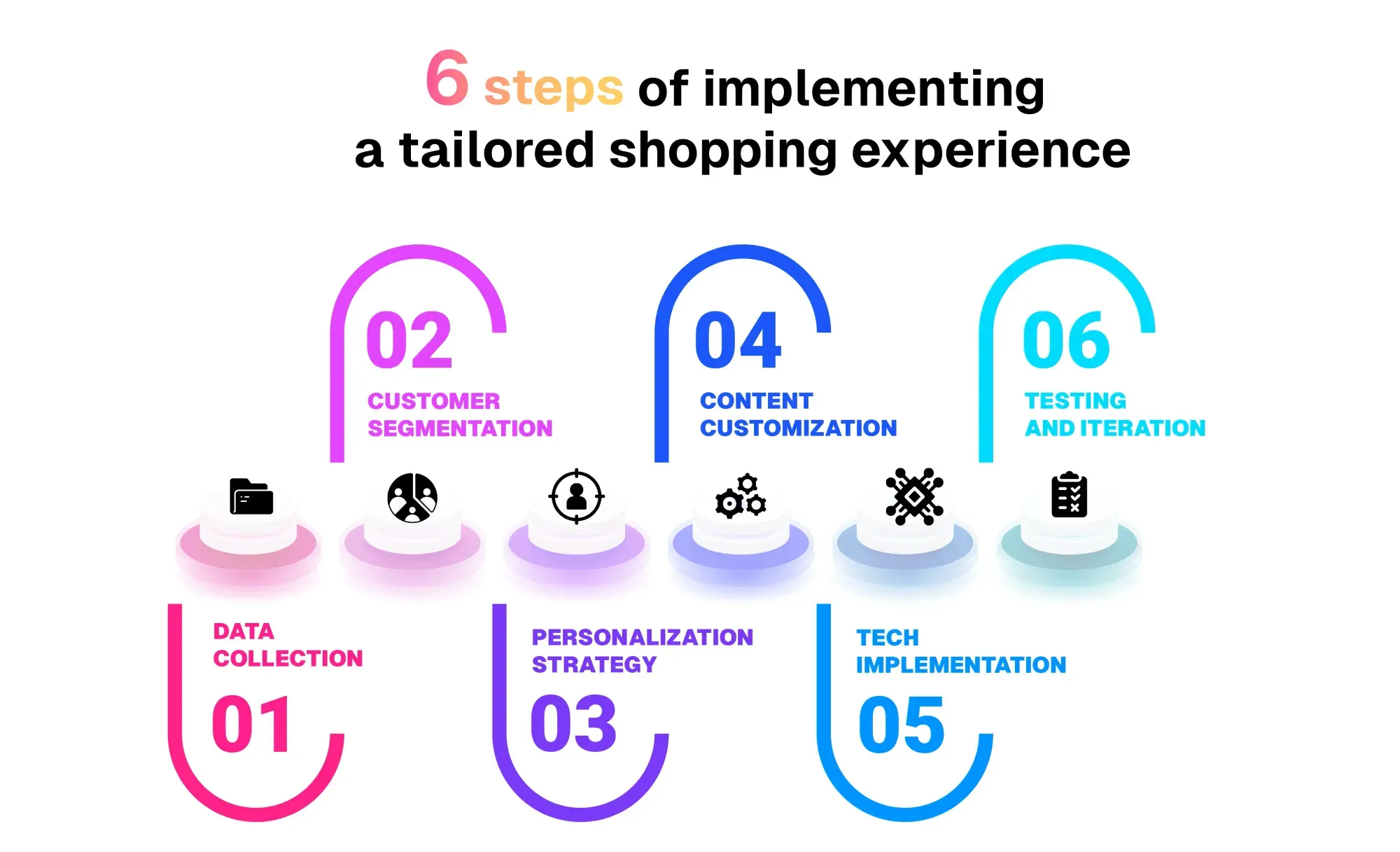
Customer Feedback and Adaptation:
- Feedback Mechanisms: Collecting feedback through surveys, reviews, and direct interactions helps businesses understand customer satisfaction and areas for improvement. This feedback should be integrated into the omnichannel distribution strategy to continually refine and enhance the customer experience.
- Adaptive Strategies: Businesses should be agile and ready to adapt their strategies based on customer feedback and changing preferences. This might involve updating product offerings, modifying communication tactics, or enhancing fulfillment processes.
By focusing on a customer-centric approach, understanding the customer journey and touchpoints, and implementing personalization and customization, businesses can create a compelling omnichannel distribution strategy. This approach not only enhances customer satisfaction and loyalty but also drives sales and operational efficiency. Through real-world omnichannel distribution examples and data-driven insights, companies can build a robust and responsive system that meets the dynamic needs of modern consumers.
Technology and Tools
Implementing a successful omnichannel distribution strategy relies heavily on the integration of advanced technology and tools. These technologies enable businesses to create seamless, efficient, and customer-centric operations. This section explores the critical role of eCommerce platforms and mobile apps, the importance of CRM systems and data analytics, and the significance of inventory and order management systems in omnichannel distribution.
Role of eCommerce Platforms and Mobile Apps
eCommerce platforms and mobile apps are the backbone of any omnichannel distribution strategy. They provide the digital infrastructure necessary to manage online sales, engage customers, and integrate various sales channels.
eCommerce Platforms:
- Centralized Management: eCommerce platforms like Shopify, Magento, and WooCommerce allow businesses to manage their online storefronts efficiently. These platforms provide tools for product listings, pricing, promotions, and customer service, ensuring a consistent and engaging shopping experience.
- Integration with Other Channels: Effective eCommerce platforms integrate seamlessly with physical stores, social media, and other sales channels. This integration ensures that inventory levels, customer data, and sales information are synchronized across all platforms, providing a unified experience. An omnichannel distribution example would be a customer adding items to their cart on a retailer’s website and then completing the purchase in a physical store.
- Scalability: eCommerce platforms are designed to scale with the business. As sales volumes increase and new sales channels are added, these platforms can handle the increased complexity without compromising performance.
Mobile Apps:
- Enhanced Customer Engagement: Mobile apps provide a direct and personalized way to engage with customers. They offer features like push notifications, personalized recommendations, and mobile-specific promotions, enhancing customer loyalty and engagement.
- Seamless Shopping Experience: Mobile apps allow customers to shop anytime, anywhere. Features like mobile payments, digital wallets, and in-app customer support contribute to a seamless shopping experience.
- Integration with Physical Stores: Many retailers use mobile apps to enhance the in-store shopping experience. For instance, apps can provide store maps, product availability, and personalized offers when customers are near a store. This integration is a crucial part of an omnichannel distribution strategy, ensuring that digital and physical channels complement each other.
Importance of CRM Systems and Data Analytics
CRM Systems:
- Centralized Customer Data: CRM systems consolidate customer data from various touchpoints into a single platform. This data includes purchase history, preferences, and interactions across different channels. By having a unified view of the customer, businesses can provide personalized and consistent service.
- Personalization and Targeting: Using the insights gained from CRM data, businesses can create targeted marketing campaigns and personalized recommendations. For example, an omnichannel distribution example could be sending personalized emails with product recommendations based on a customer’s browsing history.
- Improved Customer Service: CRM systems enable customer service representatives to access detailed customer profiles, ensuring they have the necessary information to resolve issues quickly and effectively. This leads to higher customer satisfaction and loyalty.
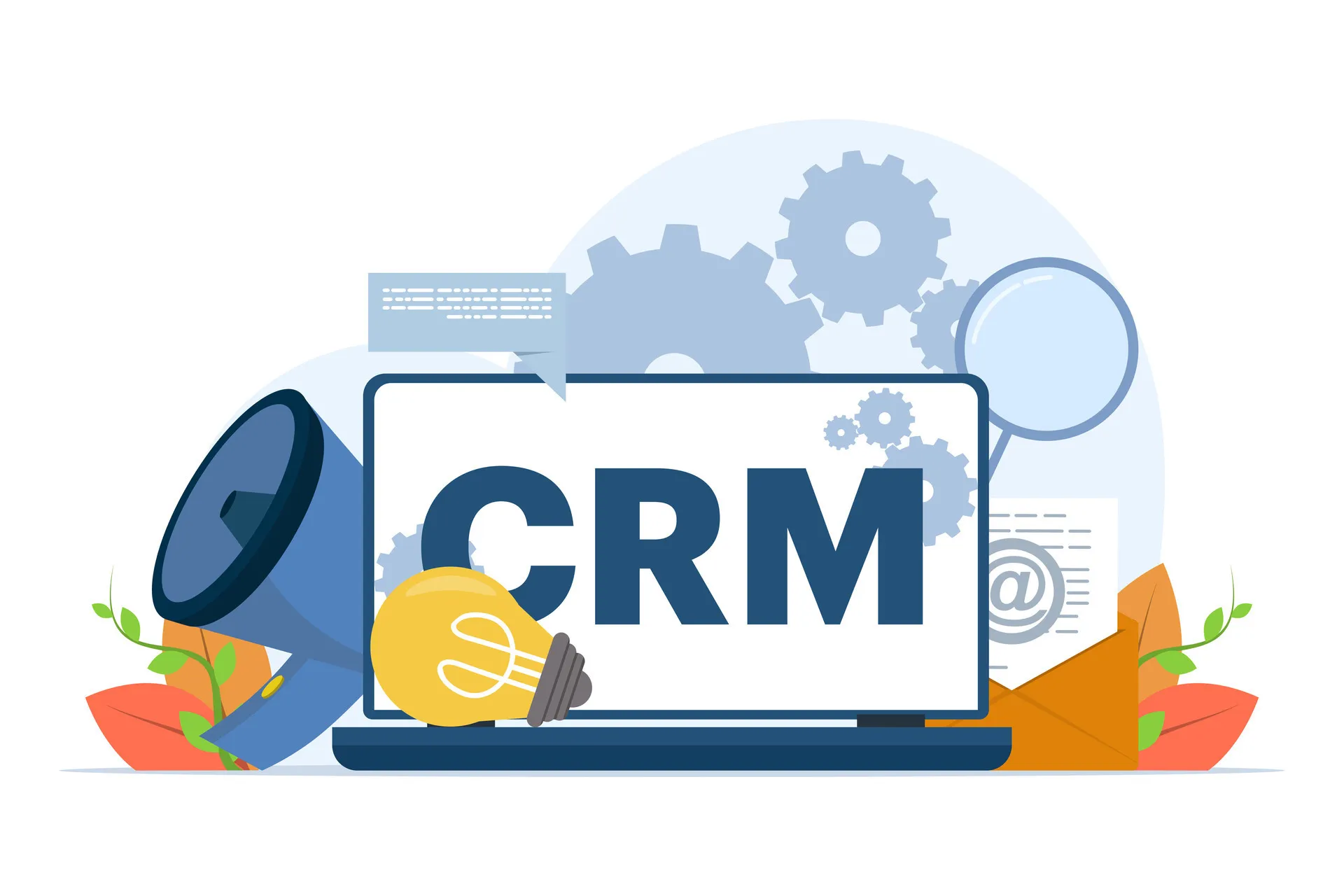
Data Analytics:
- Actionable Insights: Data analytics tools analyze vast amounts of data to uncover patterns and trends. These insights help businesses make informed decisions about inventory management, marketing strategies, and customer engagement.
- Demand Forecasting: Analytics can predict future demand based on historical data, seasonal trends, and market conditions. This capability allows businesses to optimize inventory levels, reducing the risk of stockouts and overstock situations.
- Performance Monitoring: Data analytics track key performance indicators (KPIs) such as sales, conversion rates, and customer satisfaction. Regular monitoring helps businesses identify areas for improvement and measure the effectiveness of their omnichannel distribution strategy.
Inventory and Order Management Systems
Effective inventory and order management systems are crucial for maintaining efficiency and accuracy in omnichannel distribution. These systems ensure that products are available where and when customers want them, and that orders are fulfilled accurately and promptly.
Inventory Management Systems:
- Real-Time Inventory Tracking: Advanced inventory management systems provide real-time visibility into stock levels across all channels. This ensures that inventory data is always up-to-date, reducing the risk of overselling or stockouts.
- Automated Replenishment: These systems can automatically reorder products when stock levels fall below a certain threshold. This automation helps maintain optimal inventory levels, ensuring products are always available for customers.
- Centralized Control: For businesses with multiple warehouses and stores, a centralized inventory management system streamlines operations by providing a single point of control. This integration is vital for an effective omnichannel distribution strategy, ensuring consistency and efficiency across the supply chain.
Order Management Systems (OMS):
- Efficient Order Processing: An OMS manages the entire order lifecycle, from order placement to delivery. This includes order routing, inventory allocation, and shipment tracking. Efficient order processing ensures that customers receive their orders promptly and accurately.
- Omnichannel Fulfillment: An OMS supports various fulfillment options, such as ship-from-store, buy online, pick up in-store (BOPIS), and curbside pickup. This flexibility caters to different customer preferences and enhances the shopping experience.
- Returns Management: Handling returns efficiently is a critical aspect of customer satisfaction. An OMS streamlines the returns process, ensuring that returned items are processed quickly and accurately. This system updates inventory levels in real-time, making products available for resale sooner.
The integration of advanced technology and tools is essential for implementing a successful omnichannel distribution strategy. eCommerce platforms and mobile apps facilitate seamless customer engagement and sales channel integration, while CRM systems and data analytics provide the insights needed for personalized marketing and efficient operations. Inventory and order management systems ensure that products are available and orders are fulfilled accurately and promptly. By leveraging these technologies, businesses can create a cohesive and efficient omnichannel distribution strategy that meets the demands of modern consumers and drives long-term success.
Logistics and Supply Chain Management
Effective logistics and supply chain management are critical components of a successful omnichannel distribution strategy. By integrating logistics solutions, implementing real-time inventory tracking and management, and ensuring efficient order fulfillment and last-mile delivery options, businesses can create a seamless and efficient omnichannel distribution system. This section explores these key aspects in detail.
Integrated Logistics Solutions
Integrated logistics solutions are essential for coordinating the various components of the supply chain and ensuring smooth operations across all channels. These solutions involve the use of advanced technologies and systems to streamline logistics processes, improve efficiency, and reduce costs.
End-to-End Visibility:
- Integrated logistics solutions provide end-to-end visibility of the supply chain, enabling businesses to monitor the movement of goods from suppliers to customers. This visibility helps in identifying bottlenecks and optimizing the flow of goods.
- An omnichannel distribution example of end-to-end visibility is using a centralized logistics platform that tracks shipments, inventory levels, and delivery status in real-time, allowing for proactive management of the supply chain.
Seamless Integration of Systems:
- Integrating various logistics systems, such as Warehouse Management Systems (WMS), Transportation Management Systems (TMS), and OMS, ensures seamless communication and data sharing. This integration is crucial for synchronizing operations and maintaining accurate inventory records.
- For instance, a retailer can integrate its WMS and TMS to automate the process of picking, packing, and shipping orders, reducing manual errors and increasing efficiency.
Collaboration with Logistics Partners:
- Collaborating with third-party logistics (3PL) providers and other logistics partners is a key aspect of integrated logistics solutions. These partnerships enable businesses to leverage the expertise and resources of specialized logistics providers, improving overall efficiency and service quality.
- An example of this is partnering with a 3PL provider to handle last-mile delivery, ensuring timely and reliable delivery to customers while allowing the retailer to focus on core business activities.
Real-Time Inventory Tracking and Management
Real-time inventory tracking and management are critical for maintaining accurate inventory levels, optimizing stock, and ensuring products are available when and where customers need them. This capability is a cornerstone of any effective omnichannel distribution strategy.
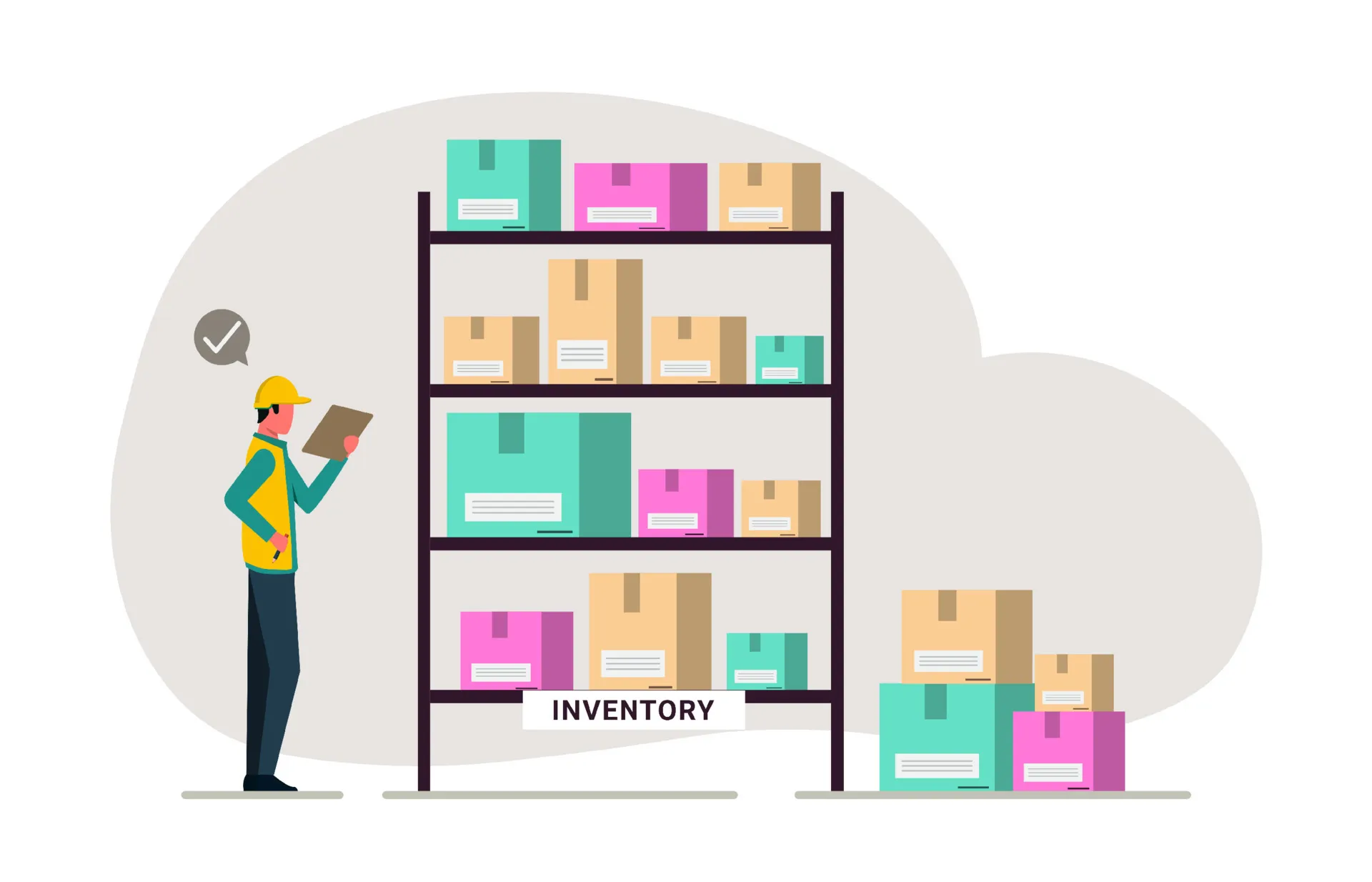
Real-Time Inventory Visibility:
- Real-time inventory tracking systems provide up-to-date information on inventory levels across all channels. This visibility helps in preventing stockouts and overstock situations, improving inventory turnover and reducing carrying costs.
- For example, a retailer using RFID technology can track inventory levels in real-time, ensuring that products are accurately counted and available for sale both online and in physical stores.
Automated Inventory Replenishment:
- Automated replenishment systems use real-time data to trigger restocking orders when inventory levels fall below a predetermined threshold. This automation ensures that stock levels are maintained without manual intervention, reducing the risk of stockouts.
- An omnichannel distribution example of automated replenishment is a grocery store that automatically reorders products based on sales data and inventory levels, ensuring that popular items are always in stock.
Inventory Optimization:
- Inventory optimization tools analyze historical sales data, seasonal trends, and market demand to determine the optimal inventory levels for each product. This analysis helps in balancing inventory across different locations, reducing excess stock and improving cash flow.
- For instance, a fashion retailer can use inventory optimization to allocate stock based on regional demand, ensuring that the right products are available in the right stores at the right time.
Efficient Order Fulfillment and Last-Mile Delivery Options
Efficient order fulfillment and last-mile delivery are crucial for meeting customer expectations and ensuring a seamless shopping experience. These processes involve coordinating various aspects of the supply chain to deliver products quickly and accurately.
Order Fulfillment Optimization:
- Optimizing order fulfillment processes involves streamlining the picking, packing, and shipping of orders to reduce lead times and improve accuracy. This optimization can be achieved through the use of automated systems, advanced analytics, and efficient workflows.
- An example of optimized order fulfillment is a warehouse that uses automated conveyors and sorting systems to quickly and accurately fulfill online orders, reducing the time from order placement to shipment.
Last-Mile Delivery Solutions:
- Last-mile delivery is the final step in the supply chain, where products are delivered from the distribution center to the customer. Efficient last-mile delivery solutions are essential for meeting customer expectations for fast and reliable delivery.
- Last-mile delivery options include using local courier services, crowd-sourced delivery platforms, and in-house delivery fleets. For instance, an omnichannel distribution strategy might involve using a combination of these options to ensure timely delivery in different regions.
Flexible Delivery Options:
- Offering flexible delivery options, such as same-day delivery, next-day delivery, and scheduled delivery, caters to different customer preferences and enhances the overall shopping experience. Providing these options requires a well-coordinated logistics network and real-time tracking capabilities.
- An example of flexible delivery is an eCommerce retailer that allows customers to choose their preferred delivery time and date during checkout, ensuring that deliveries are convenient and meet customer expectations.
Customer Communication and Tracking:
- Keeping customers informed throughout the delivery process is essential for maintaining satisfaction. Real-time tracking and automated notifications provide customers with updates on their order status, including shipment confirmation, estimated delivery times, and any delays.
- An omnichannel distribution example of effective customer communication is a retailer that provides real-time tracking links via email or SMS, allowing customers to monitor their delivery status and plan accordingly.
Integrating logistics solutions, implementing real-time inventory tracking and management, and ensuring efficient order fulfillment and last-mile delivery are vital components of a successful omnichannel distribution strategy. These elements work together to create a seamless and efficient supply chain that meets customer expectations and enhances operational efficiency. By leveraging advanced technologies and optimizing logistics processes, businesses can achieve a competitive edge in the rapidly evolving market and provide a superior customer experience.
Challenges in Omnichannel Distribution
Implementing an effective omnichannel distribution strategy presents several challenges, particularly in operational, technical, and ensuring a seamless customer experience. Addressing these challenges is crucial for maintaining customer satisfaction and loyalty in a competitive market.
Technological Challenges
Integration of Legacy Systems
One of the primary technological challenges in omnichannel distribution is integrating legacy systems with modern technologies. Many established businesses rely on older systems that may not be compatible with new, advanced technologies essential for an efficient omnichannel distribution strategy.
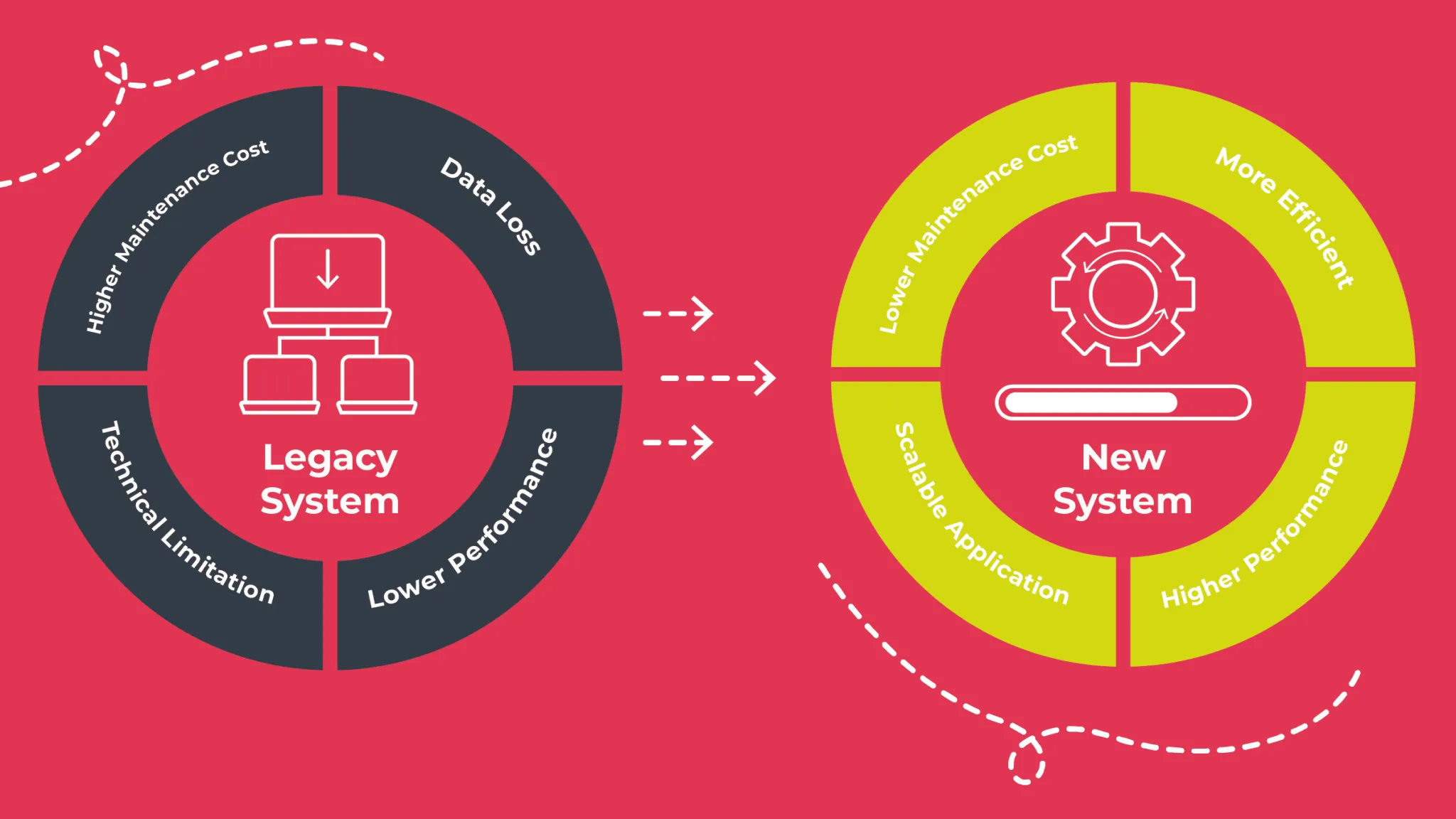
Compatibility Issues:
- Legacy systems often lack the flexibility and compatibility required to integrate with new eCommerce platforms, CRM systems, and inventory management tools. This can lead to inefficiencies and data silos, where information is not seamlessly shared across the organization.
- An omnichannel distribution example of this challenge is a retailer using an outdated inventory management system that cannot sync in real-time with their eCommerce platform, leading to discrepancies in stock levels and delayed order processing.
Cost and Complexity:
- Upgrading or replacing legacy systems can be costly and complex. Businesses must invest in new technologies, train staff, and ensure minimal disruption during the transition. This process requires careful planning and significant financial resources.
- For instance, a large retailer with multiple locations might face substantial expenses and operational challenges in transitioning from an old ERP system to a modern, integrated omnichannel distribution platform.
Data Migration:
- Migrating data from legacy systems to new platforms is another significant hurdle. Ensuring data accuracy and consistency during the transfer is crucial, as errors can lead to operational inefficiencies and poor customer experiences.
- An example of this is a retailer moving customer data from an old CRM to a new system, requiring meticulous data cleaning and validation to ensure all information is correctly transferred and accessible across all channels.
Incremental Integration:
- To mitigate the risks and costs associated with a full system overhaul, businesses can adopt an incremental integration approach. This involves gradually integrating new systems with existing ones, allowing for smoother transitions and less operational disruption.
- An omnichannel distribution strategy example could be a retailer integrating a new order management system with their existing inventory system first, before expanding to other areas like CRM and eCommerce platforms.
Data Security and Privacy Concerns
As businesses collect and manage vast amounts of customer data across various channels, data security and privacy concerns become paramount. Ensuring the protection of sensitive information is critical for maintaining customer trust and complying with regulatory requirements.
Data Breaches:
- The increasing frequency and sophistication of cyberattacks pose significant risks to omnichannel distribution systems. Data breaches can lead to the exposure of sensitive customer information, resulting in financial losses, legal consequences, and damage to brand reputation.
- An omnichannel distribution example of a data breach could be hackers gaining access to a retailer’s customer database through vulnerabilities in an outdated system, compromising personal and payment information.
Regulatory Compliance:
- Compliance with data protection regulations such as the General Data Protection Regulation (GDPR) in Europe and the California Consumer Privacy Act (CCPA) in the US is mandatory for businesses handling customer data. These regulations impose strict requirements on data collection, storage, and sharing practices.
- For instance, a retailer operating in multiple regions must ensure that their omnichannel distribution strategy complies with various regulatory standards, requiring robust data management and security practices.
Secure Data Integration:
- Integrating data from multiple sources while ensuring security is a complex challenge. Data must be encrypted during transmission and storage, and access controls must be implemented to prevent unauthorized access.
- An omnichannel distribution strategy example of secure data integration is a retailer using end-to-end encryption and multi-factor authentication to protect customer data across their eCommerce platform, CRM system, and inventory management tools.
Privacy by Design:
- Implementing a privacy-by-design approach ensures that data protection is integrated into the development of systems and processes from the outset. This proactive strategy helps mitigate risks and ensures compliance with data protection laws.
- For example, a retailer designing a new mobile app as part of their omnichannel distribution strategy can incorporate privacy features such as minimal data collection, transparent privacy policies, and user consent mechanisms.
Ongoing Monitoring and Improvement:
- Data security is not a one-time effort but requires continuous monitoring and improvement. Businesses must regularly update their security protocols, conduct vulnerability assessments, and stay informed about emerging threats.
- An example of this is a retailer implementing regular security audits and using advanced analytics to detect and respond to potential security incidents in real-time.
The integration of legacy systems and addressing data security and privacy concerns are significant technological challenges in omnichannel distribution. Successfully overcoming these challenges requires careful planning, investment in modern technologies, and a proactive approach to data protection. By addressing these issues, businesses can create a robust and secure omnichannel distribution strategy that enhances efficiency, ensures compliance, and builds customer trust. Through practical omnichannel distribution examples and best practices, companies can navigate these challenges and achieve a seamless and efficient omnichannel operation.
Operational Challenges
Inventory Management Across Multiple Channels
Effective inventory management is a cornerstone of omnichannel distribution. Managing inventory across multiple channels—such as online stores, physical retail locations, and third-party marketplaces—requires a sophisticated approach to ensure accuracy, availability, and efficiency.
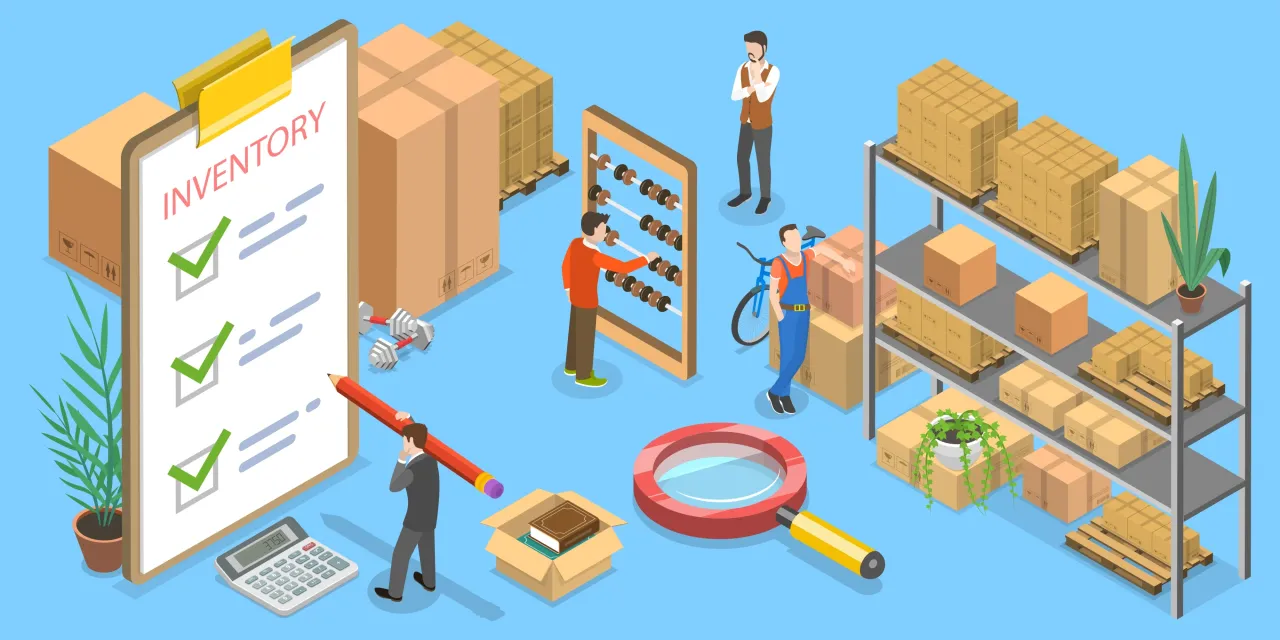
Real-Time Inventory Visibility:
- Achieving real-time visibility into inventory levels across all channels is essential for preventing stockouts and overstock situations. This requires integrating inventory management systems with all sales and distribution channels to provide a single, unified view of inventory.
- An omnichannel distribution example of this challenge is a retailer that sells through its website, physical stores, and a third-party marketplace. Without real-time inventory visibility, it risks overselling products or having unsold inventory sitting idle in warehouses.
Inventory Synchronization:
- Synchronizing inventory data across multiple channels ensures that each channel reflects accurate stock levels. This synchronization must be continuous and automated to prevent discrepancies that could lead to poor customer experiences.
- For example, a customer purchasing an item online should see the same availability status as a store employee checking stock in a physical location. An effective omnichannel distribution strategy relies on seamless synchronization to achieve this.
Demand Forecasting:
- Accurate demand forecasting is critical for maintaining optimal inventory levels. By analyzing historical sales data, market trends, and seasonal variations, businesses can predict future demand and adjust inventory levels accordingly.
- An omnichannel distribution example could be a fashion retailer using advanced analytics to forecast demand for new seasonal collections, ensuring that enough stock is allocated to each channel to meet anticipated customer demand.
Centralized vs. Decentralized Inventory:
- Deciding between centralized and decentralized inventory models is a key operational challenge. Centralized inventory can simplify management and reduce costs, but may lead to longer delivery times. Decentralized inventory, where stock is distributed across multiple locations, can improve delivery speed but increase complexity and costs.
- A balanced approach might involve centralizing slow-moving items while decentralizing high-demand products to ensure quick delivery and optimal stock levels.
Returns Management:
- Handling returns efficiently is crucial for customer satisfaction and effective inventory management. Returns should be processed quickly, and returned items must be promptly restocked and made available for resale.
- An example is a retailer implementing a streamlined returns process that updates inventory levels in real-time, ensuring that returned products are quickly inspected, restocked, and available for purchase across all channels.
Coordinating Logistics and Supply Chain
Coordinating logistics and the supply chain in an omnichannel distribution system is a complex task that involves ensuring that products move smoothly from suppliers to customers, regardless of the channel through which they are purchased.
Integrated Supply Chain Management:
- An integrated supply chain management system is essential for coordinating the flow of goods across all channels. This integration includes everything from procurement and production to warehousing and distribution.
- An omnichannel distribution example is a retailer using a centralized logistics platform to manage and track shipments from suppliers to distribution centers and finally to customers, ensuring efficient and transparent operations.
Logistics Coordination:
- Effective logistics coordination involves synchronizing transportation, warehousing, and distribution activities to meet customer expectations for timely delivery. This includes optimizing routes, managing transportation fleets, and coordinating with third-party logistics providers.
- For instance, a retailer might use a Transportation Management System (TMS) to plan and execute the movement of goods, ensuring that products are delivered efficiently and cost-effectively.
Flexibility and Responsiveness:
- The ability to be flexible and responsive to changes in demand and supply chain disruptions is crucial. This requires a robust supply chain strategy that can adapt to unforeseen events such as natural disasters, supplier issues, or sudden spikes in demand.
- An omnichannel distribution strategy might include having contingency plans in place, such as alternative suppliers or backup transportation options, to maintain operations during disruptions.
Last-Mile Delivery Optimization:
- Last-mile delivery is the final step in the supply chain and directly impacts customer satisfaction. Optimizing last-mile delivery involves ensuring that products reach customers quickly and efficiently, which can be challenging due to factors like traffic, delivery density, and customer availability.
- An example of last-mile delivery optimization is a retailer using route optimization software to plan the most efficient delivery routes, reducing delivery times and costs while meeting customer expectations.
Technology Integration:
- Integrating advanced technologies such as Internet of Things (IoT) devices, blockchain, and AI can enhance supply chain visibility and efficiency. These technologies provide real-time data on inventory levels, shipment status, and other critical metrics.
- For instance, IoT devices can monitor the condition and location of products in transit, while blockchain can provide a secure and transparent record of the entire supply chain, enhancing trust and accountability.
Collaboration with Partners:
- Successful omnichannel distribution often requires collaboration with various partners, including suppliers, manufacturers, and logistics providers. Effective communication and coordination with these partners are essential for maintaining a smooth and efficient supply chain.
- An omnichannel distribution example of collaboration is a retailer working closely with a third-party logistics provider to manage warehousing and transportation, leveraging the provider’s expertise and infrastructure to improve overall efficiency.
Inventory management across multiple channels and coordinating logistics and the supply chain are significant operational challenges in omnichannel distribution. Addressing these challenges requires sophisticated technology, strategic planning, and effective collaboration. By achieving real-time inventory visibility, optimizing logistics processes, and leveraging advanced technologies, businesses can create a seamless and efficient omnichannel distribution system that meets customer expectations and drives operational excellence. Through practical omnichannel distribution examples and best practices, companies can navigate these challenges and build a robust omnichannel distribution strategy that enhances overall performance and customer satisfaction.
Customer Experience Challenges
Customer Expectations for Omnichannel Distribution
Modern consumers have high expectations for their shopping experiences. They demand a seamless, integrated experience across all channels, whether they are shopping online, in-store, or via mobile apps. Meeting these expectations is a significant challenge for businesses implementing an omnichannel distribution strategy.

Seamless Integration Across Channels:
- Customers expect a consistent experience regardless of the channel they use. This means having synchronized inventory, unified customer profiles, and consistent pricing and promotions across all platforms.
- An omnichannel distribution example of seamless integration is a customer starting a purchase on a retailer’s website, and then completing it in a physical store, where the store staff can access the customer’s online shopping cart and preferences.
Real-Time Information:
- Customers want real-time information on product availability, order status, and delivery tracking. Providing accurate and up-to-date information requires integrating various systems and ensuring that data flows seamlessly across all channels.
- For instance, a customer checking product availability on a mobile app should see the same stock levels as those available in-store. An effective omnichannel distribution strategy ensures this consistency.
Personalized Experiences:
- Personalization is a key component of customer expectations. Customers expect tailored recommendations, promotions, and communications based on their preferences and shopping behavior.
- An omnichannel distribution example of personalization is a retailer using data analytics to send targeted offers to customers based on their past purchases and browsing history, enhancing the shopping experience.
Convenient Fulfillment Options:
- Customers expect a variety of fulfillment options, including home delivery, in-store pickup, and curbside pickup. Providing these options requires a flexible and efficient logistics network.
- An effective omnichannel distribution strategy includes offering multiple delivery and pickup options, allowing customers to choose the method that best suits their needs.
Consistent Customer Service:
- Consistent and high-quality customer service across all channels is essential. Customers expect to receive the same level of support whether they contact customer service via phone, email, chat, or in-person.
- An example is a retailer providing unified customer service training and access to a centralized customer service platform, ensuring that all representatives have the same information and can provide consistent support.
Handling Customer Service and Returns Effectively
Efficiently managing customer service and returns is critical for maintaining customer satisfaction in an omnichannel distribution environment. Poor handling of these aspects can lead to negative customer experiences and damage the brand’s reputation.
Centralized Customer Service:
- Centralizing customer service operations ensures that all customer inquiries and issues are handled consistently and efficiently. This involves integrating customer service platforms with other systems such as CRM and order management.
- An omnichannel distribution example of centralized customer service is a retailer using a unified customer service platform that consolidates customer interactions across all channels, providing representatives with a comprehensive view of each customer’s history and preferences.
Streamlined Returns Process:
- A streamlined returns process is essential for customer satisfaction. Customers expect to be able to return products easily, regardless of where they made the purchase. This requires integrating return systems across all channels and ensuring that returns are processed quickly and accurately.
- An example of a streamlined returns process is a retailer allowing customers to return online purchases in-store, with the return being processed immediately and the inventory updated in real-time.
Automated Solutions:
- Automation can enhance customer service and return processes by reducing manual effort and increasing efficiency. Automated solutions can handle tasks such as sending return labels, processing refunds, and updating inventory.
- An omnichannel distribution example of automation is a retailer using automated systems to generate return labels and process refunds as soon as a return is initiated, providing customers with a quick and hassle-free experience.
Clear Communication:
- Clear and transparent communication is vital for managing customer expectations. Keeping customers informed about their order status, return progress, and any issues that arise helps build trust and satisfaction.
- An effective omnichannel distribution strategy includes regular updates via email, SMS, or app notifications, keeping customers informed at every stage of their purchase and return journey.
Feedback and Continuous Improvement:
- Collecting customer feedback and continuously improving customer service and returns processes is crucial for maintaining high standards. Feedback can be collected through surveys, reviews, and direct interactions.
- For example, a retailer might use customer feedback to identify common issues in the returns process and implement changes to address these problems, enhancing the overall customer experience.
Meeting customer expectations and handling customer service and returns effectively are significant challenges in omnichannel distribution. Addressing these challenges requires a comprehensive approach that includes seamless integration across channels, real-time information, personalized experiences, and efficient logistics. By implementing a robust omnichannel distribution strategy and leveraging advanced technologies, businesses can enhance customer satisfaction and build loyalty in a competitive market. Through practical omnichannel distribution examples and best practices, companies can navigate these challenges and create a superior customer experience.
Future Trends in Omnichannel Distribution
This section explores how these changes are influencing omnichannel distribution strategies, focusing on sustainability, ethical considerations, and enhanced customer experiences.
Emerging Technologies
AI and Machine Learning in Omnichannel Strategies
AI and machine learning (ML) are revolutionizing omnichannel distribution by providing advanced tools for data analysis, demand forecasting, and customer personalization. These technologies enable businesses to streamline operations, optimize inventory management, and deliver highly personalized customer experiences.
Predictive Analytics and Demand Forecasting:
- AI and ML algorithms can analyze vast amounts of historical sales data, market trends, and external factors to predict future demand with high accuracy. This capability allows businesses to optimize inventory levels, reduce stockouts, and minimize overstock situations.
- An omnichannel distribution example of predictive analytics is a retailer using ML models to forecast demand for seasonal products, ensuring adequate stock levels across all channels and reducing the risk of lost sales.
Personalization and Customer Insights:
- AI-driven personalization engines can analyze customer behavior and preferences to deliver tailored recommendations, promotions, and communication. This level of personalization enhances the customer experience and drives higher engagement and conversion rates.
- For example, a retailer implementing an omnichannel distribution strategy might use AI to analyze a customer’s online browsing history, purchase patterns, and social media interactions to provide personalized product recommendations and offers in real-time.
Automated Customer Service:
- AI-powered chatbots and virtual assistants can handle a wide range of customer service inquiries, from answering frequently asked questions to processing returns. These automated solutions improve response times, reduce operational costs, and ensure consistent customer service across all channels.
- An omnichannel distribution example of automated customer service is a retailer deploying AI chatbots on their website and mobile app to assist customers with order tracking, product inquiries, and return requests, providing 24/7 support.
Inventory Optimization:
- AI and ML can optimize inventory management by predicting the best allocation of stock across different locations and channels. This optimization considers factors such as local demand, seasonal trends, and promotional activities to ensure the right products are available where they are needed most.
- For instance, a retailer using an AI-driven inventory management system can dynamically adjust stock levels in response to changing demand patterns, ensuring optimal inventory distribution and reducing excess stock.
The Impact of IoT and Blockchain on Supply Chain Management
IoT and blockchain technology are set to have a profound impact on supply chain management, enhancing transparency, efficiency, and security. These technologies provide real-time visibility into supply chain operations and create immutable records of transactions, ensuring trust and accountability.
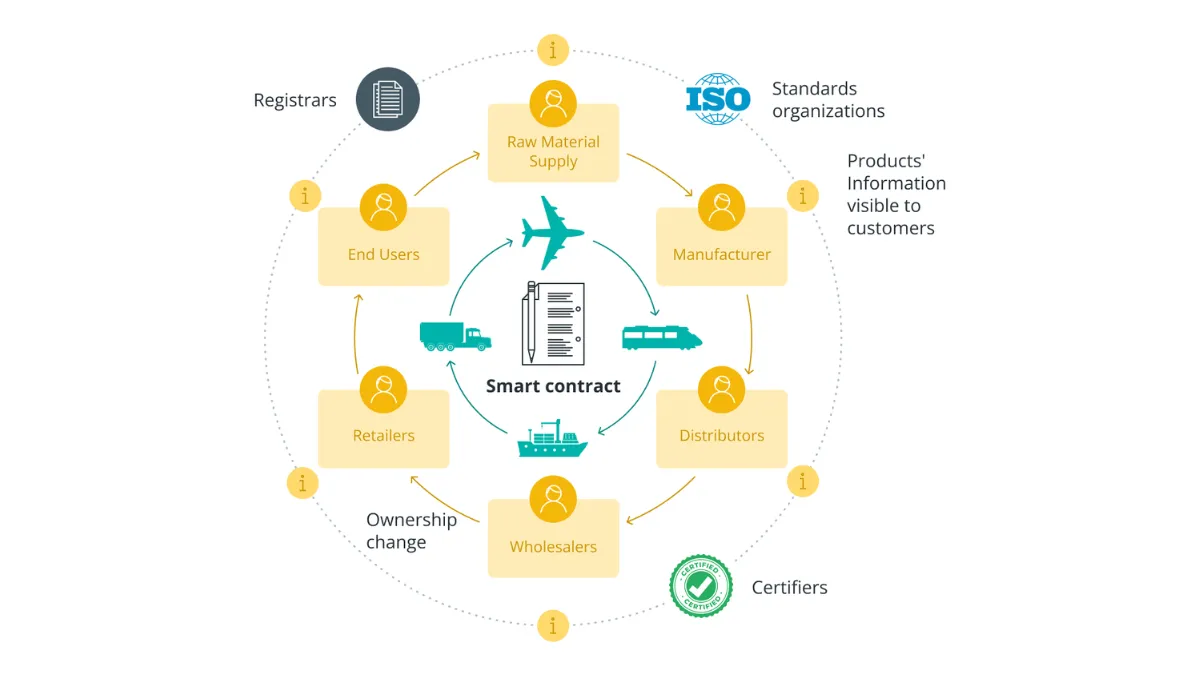
Real-Time Tracking and Monitoring:
- IoT devices such as sensors and RFID tags enable real-time tracking of products throughout the supply chain. This real-time visibility allows businesses to monitor the location, condition, and movement of goods, improving inventory management and reducing the risk of loss or damage.
- An omnichannel distribution example of IoT integration is a retailer using IoT-enabled sensors to track the temperature and humidity of perishable goods during transit, ensuring product quality and compliance with safety standards.
Supply Chain Transparency and Accountability:
- Blockchain technology provides a secure and transparent ledger of all supply chain transactions. Each transaction is recorded in an immutable blockchain, ensuring that all parties have access to a single source of truth. This transparency enhances trust and reduces the risk of fraud.
- For example, a retailer implementing an omnichannel distribution strategy might use blockchain to trace the provenance of raw materials, ensuring that products are ethically sourced and compliant with regulatory standards.
Enhanced Security and Fraud Prevention:
- Blockchain’s decentralized and tamper-proof nature makes it an ideal solution for enhancing security in supply chain operations. By recording every transaction on a secure ledger, businesses can prevent unauthorized alterations and reduce the risk of fraud.
- An omnichannel distribution example of enhanced security is a retailer using blockchain to verify the authenticity of high-value goods, ensuring that customers receive genuine products and protecting the brand’s reputation.
Automated Processes and Smart Contracts:
- Smart contracts are self-executing contracts with the terms of the agreement directly written into code. These contracts automatically trigger actions when predefined conditions are met, streamlining processes such as payment settlements and order fulfillment.
- For instance, a retailer using blockchain-enabled smart contracts can automate the release of payments to suppliers once goods are delivered and verified, reducing administrative overhead and ensuring timely payments.
Data-Driven Decision Making:
- The integration of IoT and blockchain technologies generates vast amounts of data that can be analyzed to gain insights into supply chain performance. Businesses can use this data to make informed decisions, optimize operations, and enhance overall efficiency.
- An omnichannel distribution example of data-driven decision making is a retailer analyzing data from IoT sensors and blockchain records to identify bottlenecks in the supply chain, implement corrective actions, and improve delivery times.
Emerging technologies such as AI, ML, IoT, and blockchain are transforming the landscape of omnichannel distribution. These innovations enhance supply chain transparency, efficiency, and security, while providing advanced tools for demand forecasting, inventory optimization, and customer personalization. By integrating these technologies into their omnichannel distribution strategies, businesses can meet the evolving demands of modern consumers and gain a competitive edge in the market. Through practical omnichannel distribution examples and best practices, companies can navigate the challenges of implementation and fully leverage the benefits of these cutting-edge technologies.
Sustainability and Ethical Considerations
This section explores how businesses can integrate sustainability into their supply chains and the role of omnichannel distribution in fostering ethical consumerism.
Sustainable Supply Chain Practices
Sustainable supply chain practices are crucial for minimizing environmental impact and ensuring long-term viability. By adopting these practices, businesses can reduce their carbon footprint, conserve resources, and enhance their brand reputation among environmentally conscious consumers.
Eco-Friendly Packaging:
- Sustainable packaging involves using materials that are recyclable, biodegradable, or made from renewable resources. Reducing packaging waste is a key component of sustainable supply chain practices.
- An omnichannel distribution example of eco-friendly packaging is a retailer switching to biodegradable packaging materials for online orders, reducing plastic waste and environmental impact.
Efficient Transportation and Logistics:
- Optimizing transportation routes and using energy-efficient vehicles can significantly reduce greenhouse gas emissions. Businesses can adopt omnichannel logistics strategies that prioritize fuel efficiency and minimize the carbon footprint.
- For instance, a retailer implementing an omnichannel distribution strategy might use route optimization software to plan the most efficient delivery routes, reducing fuel consumption and emissions.
Renewable Energy Sources:
- Incorporating renewable energy sources into supply chain operations, such as solar or wind power, helps reduce reliance on fossil fuels and lowers overall carbon emissions.
- An omnichannel distribution example is a distribution center powered by solar panels, ensuring that the energy used in warehousing and logistics is sustainable.
Waste Reduction and Recycling:
- Implementing waste reduction and recycling programs within the supply chain helps minimize landfill waste and conserve resources. Businesses can adopt practices such as reusing materials, recycling waste products, and reducing overall waste generation.
- For example, a retailer might establish a program to recycle returned items and defective products, ensuring that materials are reused or properly disposed of rather than ending up in landfills.
Sustainable Sourcing:
- Ensuring that raw materials and products are sourced from sustainable and ethical suppliers is crucial for maintaining a sustainable supply chain. This involves verifying that suppliers adhere to environmental and social standards.
- An omnichannel distribution strategy might include sourcing materials from suppliers certified by recognized sustainability standards, such as Fair Trade or FSC-certified wood.
The Role of Omnichannel in Promoting Ethical Consumerism
Omnichannel distribution can play a significant role in promoting ethical consumerism by providing transparency, supporting ethical brands, and encouraging responsible consumer behavior. Here’s how:
Transparency and Traceability:
- Providing transparency and traceability in the supply chain allows consumers to make informed choices about the products they purchase. Businesses can use technology to track the origin and journey of products, ensuring transparency from source to consumer.
- An omnichannel distribution example is a retailer using blockchain technology to provide detailed information about the sourcing and production of products, allowing consumers to verify the ethical and sustainable practices behind their purchases.
Supporting Ethical Brands:
- Promoting and supporting ethical brands within the omnichannel distribution network helps encourage responsible consumer behavior. Retailers can highlight products that meet ethical and sustainability standards, making it easier for consumers to choose responsible options.
- For instance, a retailer might create a dedicated section on their website and in stores for products that are sustainably sourced and ethically produced, making it simple for consumers to identify and purchase these items.
Consumer Education and Engagement:
- Educating consumers about the importance of sustainability and ethical practices can foster a more responsible consumer base. Businesses can use omnichannel platforms to share information, run campaigns, and engage with consumers on sustainability issues.
- An omnichannel distribution example is a retailer using social media, email newsletters, and in-store displays to educate customers about their sustainability initiatives and the benefits of choosing ethical products.
Incentivizing Sustainable Choices:
- Offering incentives for sustainable consumer choices can encourage more environmentally friendly behavior. This could include discounts, loyalty points, or other rewards for purchasing sustainable products or participating in recycling programs.
- For example, a retailer might offer a discount on future purchases for customers who bring in used products for recycling or choose eco-friendly shipping options.
Sustainable Omnichannel Practices:
- Integrating sustainability into omnichannel practices, such as reducing the carbon footprint of last-mile delivery and optimizing the supply chain for efficiency, helps promote ethical consumerism.
- An omnichannel distribution strategy might include offering carbon-neutral shipping options and using electric vehicles for local deliveries to reduce environmental impact.
Sustainability and ethical considerations are increasingly important in the realm of omnichannel distribution. By adopting sustainable supply chain practices and promoting ethical consumerism, businesses can not only reduce their environmental impact but also appeal to a growing base of eco-conscious consumers. Integrating these practices into an omnichannel distribution strategy ensures that businesses can meet the demands of modern consumers while fostering a more sustainable and responsible future. Through practical omnichannel distribution examples and best practices, companies can navigate the complexities of sustainability and create a positive impact on the environment and society.
Changing Consumer Behavior
Changing consumer behavior significantly influences future trends in omnichannel distribution. Gen Z and millennials, in particular, are driving shifts in how businesses approach their omnichannel distribution strategies. Understanding these demographic groups’ unique preferences and future expectations can help businesses tailor their strategies to meet evolving consumer demands.
Impact of Gen Z and Millennials on Omnichannel Trends
Gen Z and millennials are digital natives who have grown up with technology and expect seamless, integrated experiences across all shopping channels. Their behavior and preferences are shaping the future of omnichannel distribution, emphasizing convenience, personalization, and sustainability.
Digital Integration and Seamlessness:
- Gen Z and millennials expect a seamless integration of online and offline channels. They are comfortable using multiple devices and platforms for shopping and expect their experiences to be consistent and connected.
- An omnichannel distribution example is a retailer offering a unified shopping cart that allows customers to add items on their mobile app, view them on their desktop, and purchase them in-store. This level of integration is crucial for meeting the expectations of these tech-savvy consumers.
Mobile-First Approach:
- These younger generations are highly mobile-centric, using smartphones as their primary tool for shopping, socializing, and accessing information. Businesses must ensure that their mobile platforms are optimized for speed, usability, and functionality.
- For instance, a retailer might implement a mobile app with features such as personalized recommendations, instant customer support via chat, and easy payment options, all contributing to a robust omnichannel distribution strategy.
Personalization and Customization:
- Gen Z and millennials value personalized experiences tailored to their preferences and behaviors. They expect brands to understand their needs and provide relevant product recommendations and offers.
- An omnichannel distribution example of personalization is a retailer using AI and data analytics to send targeted promotions and product suggestions based on a customer’s browsing history and past purchases.
Social Commerce and Influencer Marketing:
- Social media plays a significant role in the shopping habits of these generations. They often discover products through social media platforms and trust recommendations from influencers.
- A retailer might integrate social commerce features into their omnichannel distribution strategy, allowing customers to purchase products directly from social media posts or engage with influencer content that is linked to their online store.
Sustainability and Ethical Considerations:
- Gen Z and millennials are more environmentally conscious and prefer brands that demonstrate a commitment to sustainability and ethical practices. They are likely to support businesses that align with their values.
- For example, a retailer incorporating sustainable supply chain practices and transparent sourcing information into their omnichannel distribution strategy can attract and retain these consumers.
Future Expectations of Consumers from Omnichannel Experiences
As consumer behavior continues to evolve, future expectations from omnichannel experiences are likely to focus on even greater convenience, hyper-personalization, and enhanced digital experiences. Businesses must anticipate these expectations to remain competitive.
Enhanced Convenience and Speed:
- Consumers will increasingly expect faster delivery times and more convenient shopping options, such as same-day delivery, in-store pickup, and curbside pickup.
- An effective omnichannel distribution strategy might include investments in local fulfillment centers and advanced logistics solutions to meet these demands. For instance, a retailer could use micro-fulfillment centers in urban areas to expedite delivery times.
Omnichannel Loyalty Programs:
- Loyalty programs that seamlessly integrate across all channels will become more important. Consumers will expect to earn and redeem rewards regardless of whether they shop online, in-store, or through a mobile app.
- An omnichannel distribution example of a successful loyalty program is a retailer offering a unified loyalty program where points can be accumulated and used across all shopping channels, enhancing the overall customer experience.
Immersive Digital Experiences:
- The use of augmented reality (AR) and virtual reality (VR) to create immersive shopping experiences will become more prevalent. These technologies can bridge the gap between online and offline shopping, offering consumers a more engaging experience.
- For example, a furniture retailer might use AR to allow customers to visualize how products will look in their homes before making a purchase, integrating this feature seamlessly into their omnichannel distribution strategy.
Omnichannel Customer Support:
- Future consumers will expect consistent and responsive customer support across all channels. This includes live chat on websites, social media support, and in-store assistance.
- An example of omnichannel customer support is a retailer using an integrated CRM system that allows customer service representatives to access a customer’s entire interaction history, providing personalized and informed assistance regardless of the contact channel.
Data Privacy and Security:
- As personalization increases, so will concerns about data privacy and security. Consumers will expect businesses to protect their personal information and be transparent about how it is used.
- An omnichannel distribution strategy must include robust data protection measures and clear communication about data policies. Retailers can build trust by ensuring data security and giving consumers control over their information.
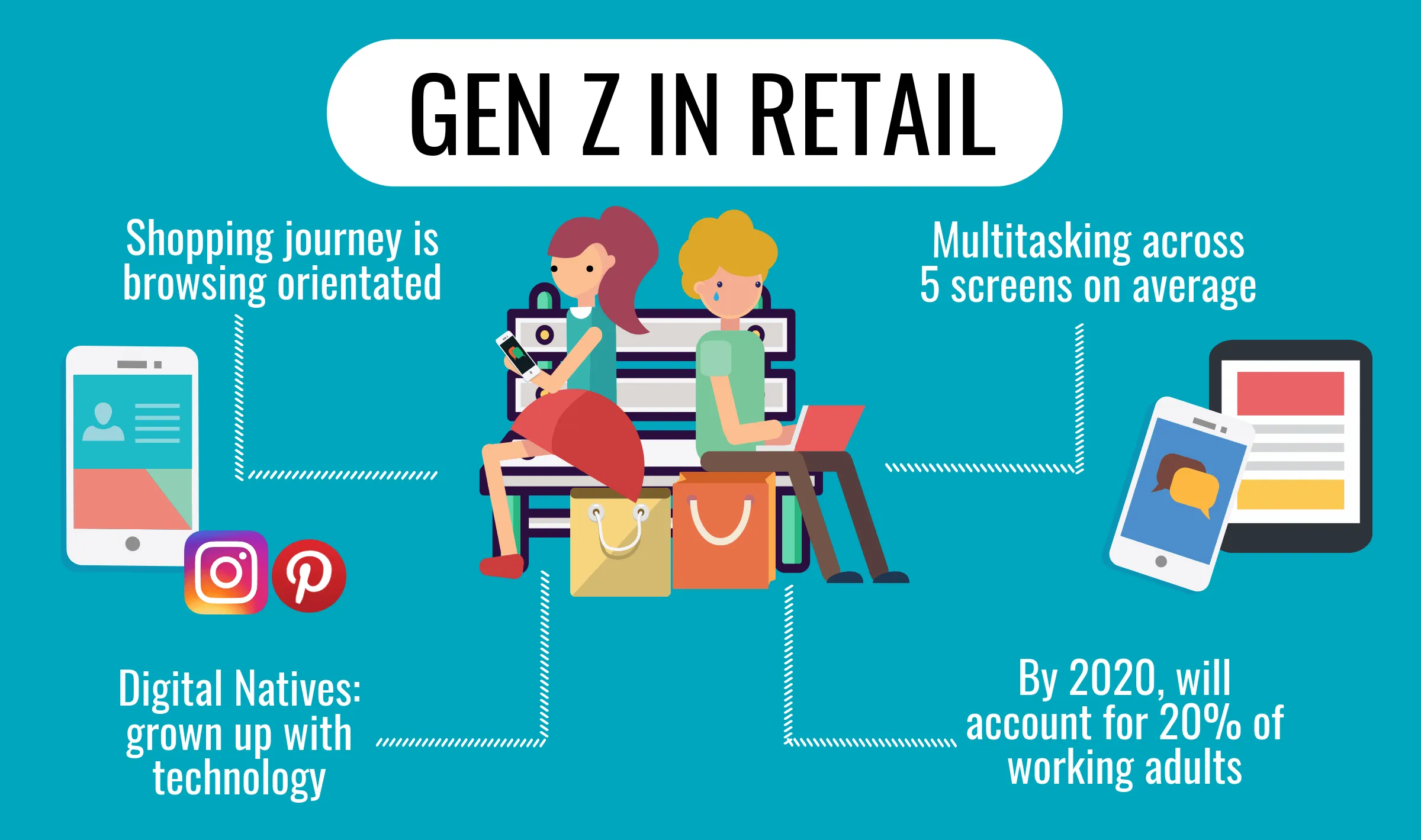
The impact of Gen Z and millennials on omnichannel trends and the future expectations of consumers are shaping the evolution of omnichannel distribution. By focusing on digital integration, personalization, sustainability, and enhanced convenience, businesses can develop effective omnichannel distribution strategies that meet the needs of modern consumers. Understanding these changing behaviors and anticipating future demands will be crucial for businesses aiming to thrive in the competitive retail landscape. Through practical omnichannel distribution examples and innovative strategies, companies can stay ahead of the curve and deliver exceptional customer experiences.
In conclusion,
Omnichannel distribution has emerged as a critical strategy for modern businesses, offering significant benefits such as enhanced customer satisfaction, increased sales, and better inventory management. However, it also presents challenges, including integrating legacy systems, ensuring data security, and managing complex logistics across multiple channels. By understanding and addressing these challenges, businesses can optimize their operations and deliver a seamless customer experience.
The future of retail and distribution in an omnichannel world will be shaped by ongoing technological advancements and changing consumer behaviors. Emerging technologies like AI, machine learning, IoT, and blockchain will continue to enhance supply chain transparency, efficiency, and personalization. Additionally, the growing influence of Gen Z and millennials will drive demand for seamless digital integration, sustainability, and ethical practices.
As businesses navigate this evolving landscape, a robust omnichannel distribution strategy will be essential for maintaining a competitive edge. By leveraging the insights and best practices discussed throughout this blog post, companies can create a cohesive and efficient omnichannel distribution system that meets the demands of modern consumers and fosters long-term success.



